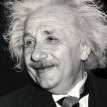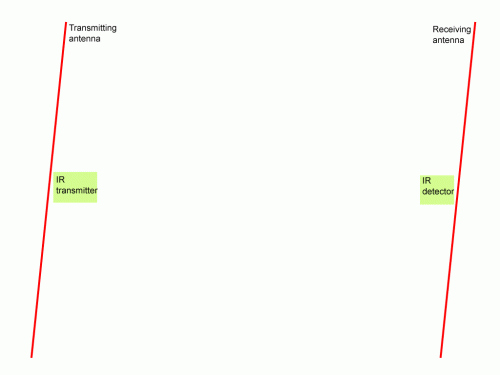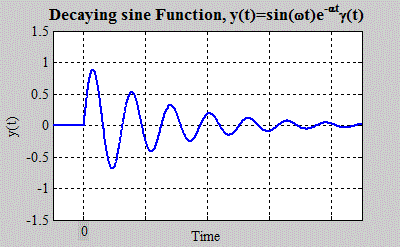-
Posts
323 -
Joined
Content Type
Profiles
Forums
Events
Everything posted by Theoretical
-
Out of respect for admins: what I write is not mainstream. Thanks dear Enthalpy. Sure the paper would be free if I wrote it. Back then I narrowed gravity down to a few theories. A short simple non-mainstream statement, if that's okay admins, and no more: There's a lot of atomic world minor effects that mainstream still needs to add, but the most important missing part of mainstream's puzzle has to do with the very nature of space and the electromotive force in conjunction with particle spin and the expanding 4th dimensional bubble universe caused by the big bang, as it explains the first type of gravity and so much more. Hint: Space is moving through you right now, and it's doing something else that's the key to understanding gravity. Unfortunately such science brings about technology that makes the nuclear bomb seem like a firecracker, but yet it bring about compact, mobile, unlimited energy to say the least. Tempting to start a thread in Speculations, but I can't, and shouldn't. This science is dangerous. Humanity in totality needs to be more responsible. Education and critical thinking skills are key. To many dangerous people. p.s. You should checkout the latest public domain advancements in Artificial Intelligence, such as Deepmind, and believe you me that's nothing compared to what's out there. They're watching. Admins, please by all means delete this post if it's too much. I understand. 11.2km/s
-

Sub-photon Radio wave experiment - Your predictions
Theoretical replied to Theoretical's topic in Quantum Theory
Thanks for the nice reply. I already discovered the experiment results. I'd have to write a lengthy paper or better yet an instructional video. I can't expect people to spend much time understanding the experiment. I know it's an unreasonable request but if one wants to see how it's incredibly simple to see the photon over noise at such radio frequencies then you'll have to spend a good amount of time reading my initial posts, studying every sentence. Unfortunately I'm no longer at liberty to discuss the experiment. Although after some thought I will say that one issue mainstream is having has to do with the nature of electromagnetic forces longitudinally (dominated above radio frequencies, photon momentum), and transverse (dominated at radio frequencies). There mainstream will discover something special. -
Thanks for reply. It turns out the near field is not quantized. It's a transverse field.
-

Charge volume density near Earth surface
Theoretical replied to Theoretical's topic in Earth Science
So is it safe to say I can remove all of such surface charge from my experiment by attaching a thin copper wire that goes up to a metal ceiling plate? -

Charge volume density near Earth surface
Theoretical replied to Theoretical's topic in Earth Science
How would one calculate the charge density from that? I'd assume the surface charge thickness would be something we could calculate, no? Unless the extra electrons per volume is so low that they don't pile. -
Does anyone know the volume charge density (C/m^3) on the earth surface? I can't seems to find it. The only thing I can find is C/m^2, which is ~1nC/m^2, but that doesn't tell me how many *extra* electrons per cubic meter in say an object on earths surface. Even a rough estimate would be great. Thanks. I appreciate any help.
-
Wow. I never said such a thing. In fact, I clearly stated a question.Please read my top post again if you wish to answer because I don't know how to better word it. Interesting book. Quantum Theory of Near-Field Electrodynamics By Ole Keller
-
Transformers use the electromagnetic near field. I haven't tested this, but would like to know if you think QM or QED shows the electromagnetic near field to be quantized. In other words, can a transformer transfer less than one tenth of h*f amount of energy in every exponentially decaying pulse for a given frequency?
-

Sub-photon Radio wave experiment - Your predictions
Theoretical replied to Theoretical's topic in Quantum Theory
I've placed a known voltage source on the scope that was shunted with known resistors that according to simple well known equations would produce a nano volt. In every test the oscilloscope software showed the correct predicted voltage. And the signal was far above noise. Hundreds of tests have shown that quadrupling the total samples doubles the SNR, as expected. My setup has shown this to be linear to at least several hours of sampling time. If anyone has any reasonable tests they would like to prove their claims, then by all means post it. -

Sub-photon Radio wave experiment - Your predictions
Theoretical replied to Theoretical's topic in Quantum Theory
The signal frequency is stable due to being triggered by the IR signal. Previous experiments have shown that quadrupling the total samples doubles the signal to noise ratio. This is linear so far up to at least several hours of sampling. I think the most I've sampled so far is around a half of one day. Experiment 1 can't tell. Experiment 2 can tell. I'm still undecided if exp.2 is necessary because I'm not convinced that QM will allow for the transmitting antenna to emit one hf when only a half hf worth of energy was put into the antenna. I think each EDP is a done deal. How would the universe know when I'm going to emit the next EDP? Maybe I won't even emit another one. This gets into theory, I think, and that's not what I want to talk about in this thread. Although I welcome anyone who wants to post their prediction and theory or interpretation of the experiment.The main goal of experiment 1 is to see what signal, if any, the transmitting antenna radiates if each EDP is at most a half of one photon worth of energy. The main goal of experiment 2 is to see if *two* receiving antennas detect the *same* signal on *both* receiving antennas *every time*. I believe that was already addressed: -

Sub-photon Radio wave experiment - Your predictions
Theoretical replied to Theoretical's topic in Quantum Theory
I think I know what you're asking. If the scope (no external amp) has a 40uV resolution, and the signal oscillates +/- 1uV, you're wondering how the scope can detect that. Very simple. Noise There's no way the 1uV signal won't show up in the spectrum. I've spent years taking analyzing spectrums on this scope. There's never been a time when the signal suddenly vanished lol. Is that what you're referring to? This scope is noisy. There's a small 50MHz sine wave signal. That's why I amplify the signal with an amp circuit to go above the scopes digital noise. The only non-white noise that's coherent to the sampling is the scope digital noise. Remember it doesn't matter how wobbly the signal is. In fact the delay between EDPs can be random because the IR will always let the scope know when the next EDP will occur. Of course BW matters, but like I said this scope doesn't change all that much from 40 to 50 MHz. And I calibrate it with a good signal generator. But it's not like I need high precision, like 99.999% of one photon. My minimum requirement is a half of one photon. -

Sub-photon Radio wave experiment - Your predictions
Theoretical replied to Theoretical's topic in Quantum Theory
Sure you can because the sample rate is 100MS/s. The drop isn't that much at 49MHz. But it doesn't matter because the measurements are relative.Also it can be calibrated by the software if you know the scopes characteristics. I use a Panasonic VP-8174A signal generator to calibrate my 2090 oscilloscope. -

Sub-photon Radio wave experiment - Your predictions
Theoretical replied to Theoretical's topic in Quantum Theory
Consider this example to understand how it works. A signal repeats thousands of times and you know when the signal starts, which triggers the scope. The part of the signal you're interested in is say flat and it's 1 nV. That signal will be there every time. Sum a million samples and you get 1mV, which comes to of course 1mV / 1000000 = 1nV average. The reason it works is because you will always know that the signal will be there. Of course there's jitter due to noise but that makes no appreciable difference. Now the noise on the other hand decreases by sqrt(1000000) on average. I haven't calculated the EDP's 1/e. The 9th bit is polarity. It works great for me and does as advertised. Best part is they provide the source code to allow people to write their own custom software. It's a PC scope, so manufacture doesn't have to provide all of the mechanical stuff found in non-PC scopes. Sorry. That's right the scope is one byte from 0 to 255, 8bits. 9bits got stuck in my head from the seller advertising it as 9bits. -

Sub-photon Radio wave experiment - Your predictions
Theoretical replied to Theoretical's topic in Quantum Theory
As stated that's the peek of the exponentially decaying pulse, not the average. That's why I wrote 0.83 V/m per amp-peek. -

Sub-photon Radio wave experiment - Your predictions
Theoretical replied to Theoretical's topic in Quantum Theory
Depends on sample time. One hour (3600 seconds) of sampling is 1/3600 Hz bandwidth given that it's a coherent signal. It's an exponentially decaying pulse. As stated 1.8nA is the peek. The 35nV is the DC voltage across the LCR antenna, which is switched on and off. This produces a square wave, which causes the LCR circuit to oscillate. The only way I can show you how it comes to that joule amount is to show you a screenshot of the LTspice power plot, but I'm on mobile right now. Since I require custom software that I wrote to analyze the signal I use a Hantek DSO-2090 PC USB 9bit with 100MB/s sample rate and ~24KB data. So each trigger takes ~ 24 thousand samples. From that you get a spectrum. Take the average of just one thousand spectrums and you'll be there. Like I said. It works. Hundreds of times I've measured sub-nano volts using this method. As stated in my previous post to you it's due to taking a lot of samples.l and taking the average. -

Sub-photon Radio wave experiment - Your predictions
Theoretical replied to Theoretical's topic in Quantum Theory
I get that a lot. Actually I've done a lot of single photon radio wave experiments, albeit different. With sample averaging it's pretty easy to detect sub-nano volts on the digital scope. What most people fail to understand is that blackbody radiation / noise is incoherent, while the signal the oscilloscope receives is coherent. Therefore you can narrow down the frequency bandwidth to unbelievable values that cuts out the noise. That's why four times as many samples of a coherent signal doubles the signal to noise ratio. So I've already done the math. A 49MHz photon is 3.2e-26 joules. Lets see what classical physics predicts using a real example. The antennas radiation resistance according to the NEC2 engine is 0.28 ohms and at 5.0 meters away from the transmitting antenna field is 0.83 V/m per amp-peek. When we enter the antenna into LTspice and set the voltage source so that the transmitting antenna produces 3.2e-26 joules per pulse, the antenna peek current is 1.8nA, produced by a 35nV source pulse (easy task, easy circuit). So given past experiments I can gladly say that a signal of 1.8nA is extremely easy to detect given my setup. This was confirmed hundreds of times with correct predictions. So for example if the antenna is set to radiate a strong signal, and we then decrease the antenna current to say by a 100,000 times, the oscilloscope software shows a drop in signal by 100,000 with a very clear signal spike in the spectrum. The aforementioned example is just an example. I could very well change the details such as frequency, distances, etc. So that's what classical physics predicts. And I ask everyone here, what does QM predict according to your understanding of physics? No need to give specific values. Just a simple experiment result such as "The oscilloscope will not detect the signal." -
Anyone dare to predict the results? This experiment is still being built. So I don't know the results, yet. I make no claims what the experimental results will be. Definition: EDP - exponentially decaying pulse. Goal of experiment 1 - one transmitter, *one* receiver: 1) To emit sub-photons. 2) To possibly know when the EDP (exponentially decaying pulse) is absorbed by the receiving antenna. 3) To absorb sub-photons from one receiving antenna. Goal of experiment 2 - one transmitter, *two* receivers: 1) To emit sub-photons. 2) To possibly know when the EDP (exponentially decaying pulse) is absorbed by both receiving antennas. 3) To have two separated receiving antennas simultaneously absorb some of the energy in the emitted sub-photon. The software will either multiply both signals together or subtract both signals to guarantee that both antennas received a EDP at the same time every time. First radio wave experiment: The following video shows an animation of experiment 1 along with notes and descriptions: https://youtu.be/oZf9bHqfbu0 If this forum supports animaged gifs, here's an animation of experiment 1. You might have to click on the image. Experiment consist of one transmitter and one receiver. Both are physically separated by roughly one wavelength, but facing each other. The transmitting antenna is a simple dipole antenna (a straight wire or tube, center fed). The receiving antenna is also a simple dipole. Every so often the transmitting antenna will transmit an EDP (exponentially decaying pulse). The center frequency of the EDP will be ~ 49MHz. Example of an EDP: Important: The total transmitted energy for each entire EDP will be significantly less than one h*f, where h is planck's constant, and f is the center frequency. The oscilloscope will display a spectrum and highlight the center frequency, in addition to displaying the time domain signal. I'll try to make the *delay* between each EDP as long as possible. Second radio wave experiment: Similar to the first experiment, except there will be two receivers. Both receivers will be separated from each other by at least one wavelength, and at least one wavelength away from the transmitter. The second experiment will accomplish the same as experiment 1 with the addition of knowing if both receiving antennas can absorb a sub-photon *simultaneously*. Again, I'm not saying what the results will be, and actually at this point I'm not sure. By all means please post your prediction for experiment 2 as well. It'll be interesting. BTW, as mentioned in the video, the purpose of the IR transmitter & detector is to signal the oscilloscope that an EDP is about to be emitted. This is fed to the oscilloscopes trigger, which causes the oscilloscope to collect a certain amount of data. The data is then fed to the PC, where my software processes the data.
-

How does entangled particles communicate ?
Theoretical replied to Kris_o_O's topic in Quantum Theory
Hi Eise, Nice questions. Remember though this part of the forum is strictly QM. Swansont is giving you the correct QM. Although yes there is another interpretation of the experiments ... and well I'm not allowed to even so as mention any details except that IMO it's much more convincing than QM. -
Exhausted! Just got back from final Christmas party. Hope to start building experiment #1 of 3 by Sunday.
-

How does entangled particles communicate ?
Theoretical replied to Kris_o_O's topic in Quantum Theory
Why the need to lie? No, I presented math based on classical physics. Anyhow, another example of an illusion is the mouse moving on a screen. -

How does entangled particles communicate ?
Theoretical replied to Kris_o_O's topic in Quantum Theory
I forgot to mention phase velocity can exceed c, but it's not communication. It corresponds to the propagation speed of a theoretical single-frequency component of the wave at that frequency. In a way it's an illusion, if you know what I mean. Look up de broglie wave. -

How does entangled particles communicate ?
Theoretical replied to Kris_o_O's topic in Quantum Theory
I know that's mainstreams stance, but I have evidence that says otherwise, but I'm not allowed to post it here. -

How does entangled particles communicate ?
Theoretical replied to Kris_o_O's topic in Quantum Theory
In all my studies I've never seen any experimental evidence of an instantaneous communication link. But of course they can communicate at the speed of light.



